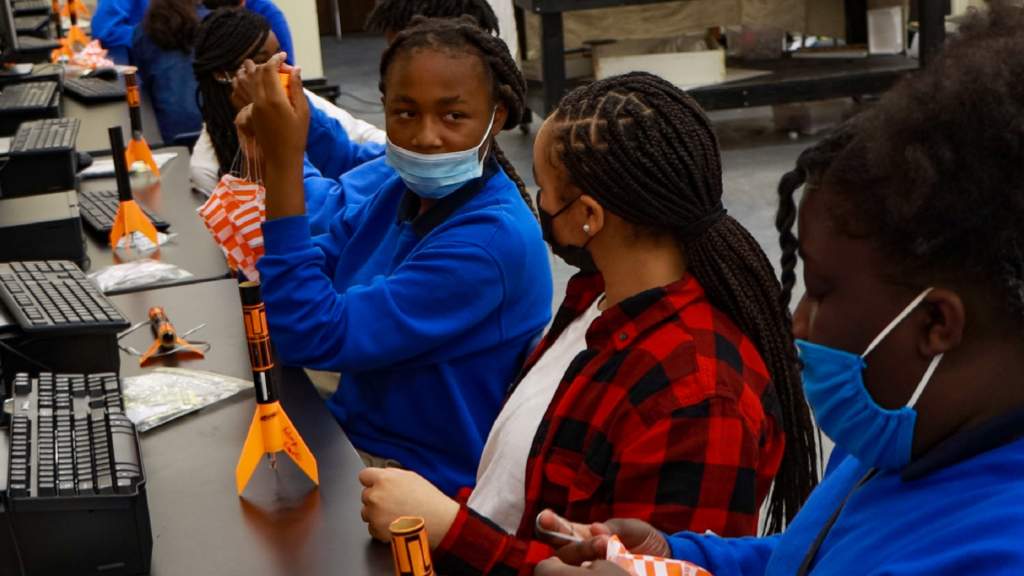Daily Do
How is energy transferred to the gas particles during ignition?

Sensemaking Checklist




Lesson Snapshot
Middle school students, as scientists, investigate particle motion and forces to answer the following driving question: How is energy transferred to the gas particles during ignition? Students are continuing to investigate the phenomenon of the successful model rocket launch from lesson one. Students watch a video and analyze diagrams to collect information about what is happening inside the engine of the model rocket during ignition. Students identify evidence of energy in the video and consider if a chemical reaction has happened. To gain more information about the connection between chemical reactions and energy, students observe three chemical reactions and measure temperature change. Students use this information to revise their models showing the transfer of energy in the model rocket system.
Click the Download PDF button above for the complete Lesson Plan.
Materials
Student Materials
Per Student
- Investigations Student Guide
- Cross-Section of Model Rocket Engine
- Model Rocket Flight Diagrams
- Lesson 4 Record of Evidence
Per Small Group (2 to 4 students)
- Non-latex gloves
- Goggles
- Lab apron
If Chemical Reaction 1 is done by groups
Chemical Reaction 1
- 1 tablespoon of calcium chloride
- 1 teaspoon of sodium bicarbonate
- 10 mL of phenol red indicator solution
- 1 sealable plastic bag
Chemical Reaction 2
- 250 mL beaker
- 150 mL water
- 1 sodium bicarbonate tablet (ex: Alka Seltzer)
Teacher Materials
If Chemical Reaction 1 is done as a demonstration.
Chemical Reaction 1
- 1 tablespoon of calcium chloride
- 1 teaspoon of sodium bicarbonate
- 10 mL of phenol red indicator solution
- 1 sealable plastic bag
Chemical Reaction 3


